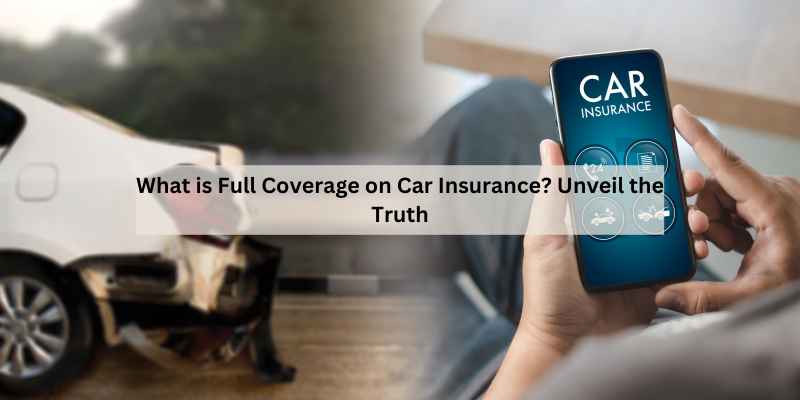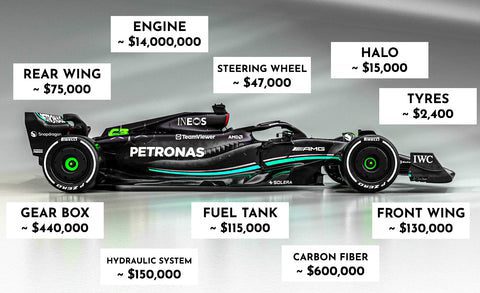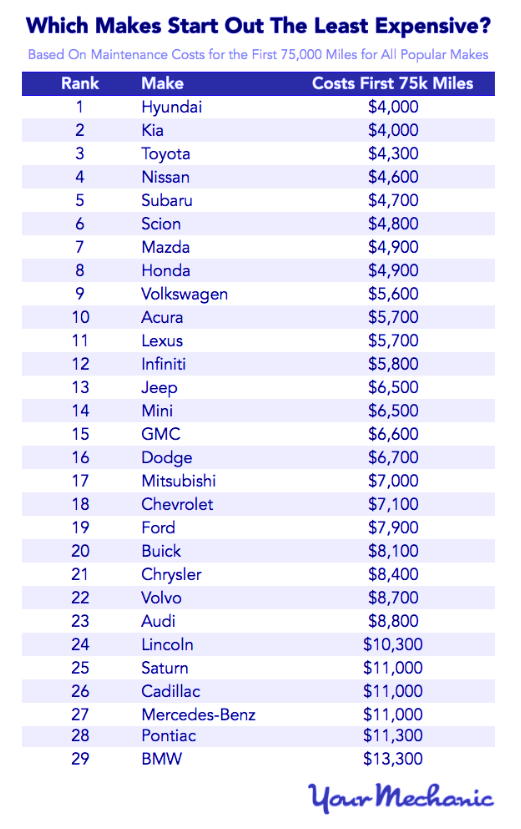What is Full Coverage on Car Insurance? Unveil the Truth
Full coverage on car insurance typically refers to a policy that includes liability, collision, and comprehensive coverage. This ensures protection against various risks, including accidents and theft.
Car insurance can be complex, but understanding full coverage simplifies the process. This type of policy protects against a wide range of potential losses. Liability coverage pays for damages to others if you’re at fault in an accident. Collision coverage helps with repairs to your vehicle after an accident, while comprehensive coverage addresses non-collision incidents like theft or natural disasters.
Opting for full coverage may offer peace of mind, especially for new or high-value vehicles. Evaluating your needs and budget is crucial before deciding on the right level of coverage for your situation.
Demystifying Full Coverage Car Insurance
Full coverage car insurance often includes liability, collision, and comprehensive coverage. Each component protects against different risks. Liability coverage pays for damages you cause to others. Collision coverage helps repair your car after an accident. Comprehensive coverage protects against non-collision events, like theft or natural disasters.
Many people think full coverage means total protection. This is not always true. It does not cover everything. For example, it often excludes specific events like wear and tear. Understanding the details is crucial for making informed choices.
| Component | Coverage Type |
|---|---|
| Liability | Damage to others |
| Collision | Repairs to your car |
| Comprehensive | Theft or non-collision damage |
The Anatomy Of Full Coverage Policies
Full coverage insurance offers protection for various scenarios. It typically includes collision insurance, which pays for damage to your car after an accident. This type of insurance helps cover repair costs, regardless of who is at fault.
Comprehensive coverage protects against non-collision events. These events can include theft, vandalism, or natural disasters. This insurance ensures that you can recover your losses in many situations.
Liability insurance is crucial for drivers. It covers damages to other people’s property and medical expenses in an accident. This coverage is often required by law and protects you from costly claims.
Beyond The Basics: Additional Protections
Uninsured Motorist Coverage protects you if another driver lacks insurance. This coverage helps pay for damages and medical bills. It ensures you are not left with high costs after an accident.
Medical Payments Coverage helps pay for your medical expenses after an accident. This includes hospital visits and doctor bills. It covers you and your passengers, regardless of who is at fault.
Personal Injury Protection (PIP) offers broader coverage for injuries. It covers medical expenses, lost wages, and other costs. PIP ensures you get the care you need without financial stress.
The Cost Factor: Pricing Full Coverage
Understanding the cost of full coverage on car insurance is essential. Several key factors affect premiums. These include your driving record, the type of vehicle, and your age. The location where you live also plays a significant role. Insurers may charge more for drivers in high-crime areas.
To lower your rates, consider raising your deductible. A higher deductible often leads to lower monthly payments. Maintaining a good credit score can also help reduce costs. Many companies offer discounts for safe driving or bundling policies. Always shop around for the best deal and compare quotes from different insurers.
Claim Time: Filing And Settlement
The claim process can be straightforward. Start by notifying your insurance company. Provide details about the accident. This includes dates, times, and locations. Collect evidence like photos and witness statements.
After filing, an insurance adjuster will review your claim. They will assess damages and determine the payout. Keep all communication clear and documented. This helps avoid misunderstandings.
Settlement negotiations may follow. Be prepared to discuss the offered amount. You can negotiate if the offer seems low. Both parties aim for a fair resolution.
Staying organized during this time is important. A well-documented claim can speed up the process. Always follow up regularly to check on the status.
Real-world Scenarios
Full coverage on car insurance includes liability, collision, and comprehensive coverage. This type of insurance is helpful in many situations. For example, a car accident can be costly. Full coverage helps pay for repairs and medical bills. It also covers theft or damage from storms.
Some limitations exist. Full coverage does not cover everything. For example, it won’t pay for regular maintenance. It may not cover personal items stolen from the car. Always read the policy carefully to understand what is included.
Exclusions can vary by provider. Certain situations may not qualify for coverage. Always check the fine print before purchasing.
Switching To Full Coverage: A Step-by-step Guide
Evaluating your insurance needs is the first step to switching to full coverage. Think about your car’s value and your driving habits. Full coverage is often best for newer cars. It protects against accidents, theft, and natural disasters.
Next, consider your financial situation. Can you afford a higher premium? Compare quotes from different insurance companies. Look for discounts like safe driving or bundling policies. Shopping for full coverage means finding the best deal for your needs.
| Factors to Consider | Description |
|---|---|
| Car’s Value | Newer cars usually need full coverage. |
| Driving Habits | Frequent drivers may need more coverage. |
| Financial Situation | Assess if you can pay higher premiums. |
| Insurance Quotes | Compare multiple quotes to find the best rate. |
Legal Requirements Vs. Personal Choice
Each state has different mandated insurance minimums for drivers. These laws ensure drivers have basic protection. Most states require liability insurance to cover damages to others.
Full coverage is not always required by law. Many drivers choose it for extra peace of mind. It typically includes collision and comprehensive coverage. This protects your car from accidents and theft.
Deciding on full coverage is a personal choice. Consider your car’s value and your financial situation. If your car is worth a lot, full coverage can be wise. If not, basic coverage might be enough.
Myths And Truths About Full Coverage
Many people believe that full coverage means 100% protection. This is not true. Full coverage usually includes liability insurance, collision, and comprehensive insurance. It does not cover everything.
Another common myth is that full coverage is the same everywhere. Coverage can vary by state and provider. Always check what your policy includes.
Full coverage can help pay for damages after an accident. It also protects against theft and vandalism. Understanding your policy is key.
Always read the fine print. Some policies may have deductibles. Knowing these details helps you avoid surprises later.
The Future Of Car Insurance
Full coverage on car insurance offers comprehensive protection. It covers damages to your car and others. Technological advancements are changing how this works. Insurance companies now use smart devices to track driving habits.
These devices can lead to lower premiums for safe drivers. Predicting changes in full coverage is becoming easier. Companies use data analytics to assess risks better. This helps in setting fairer rates for drivers.
As autonomous vehicles become common, insurance needs will evolve. New policies may be required for these cars. Keeping up with these trends is essential for drivers.
Frequently Asked Questions
What Does Full Coverage Mean In Car Insurance?
Full coverage typically includes liability, collision, and comprehensive insurance. Liability covers damage to others, while collision covers your vehicle’s damage. Comprehensive protects against non-collision incidents like theft or natural disasters. Together, these components offer extensive protection for your car and financial security in various situations.
Is Full Coverage Required By Law?
Full coverage is not legally required. However, most states mandate liability insurance. Lenders often require full coverage if you have a car loan. It’s wise to check your state’s laws and your lender’s requirements to ensure compliance and adequate protection for your vehicle.
How Much Does Full Coverage Cost?
The cost of full coverage varies widely. Factors include your vehicle’s make, model, age, and your driving history. On average, it may range from $100 to $300 monthly. It’s essential to shop around and compare quotes from different insurers to find the best rate.
When Should I Consider Full Coverage?
Consider full coverage if you have a new or valuable vehicle. It’s beneficial for those with a loan or lease. Additionally, if you want peace of mind against accidents and theft, full coverage is a wise choice. Assess your financial situation and vehicle value to decide.
Conclusion
Full coverage car insurance offers peace of mind for drivers. It protects against various risks, including accidents and theft. Understanding your policy options is essential for making informed choices. Always review your needs and budget. This approach ensures you choose the best coverage to keep you and your vehicle safe on the road.




